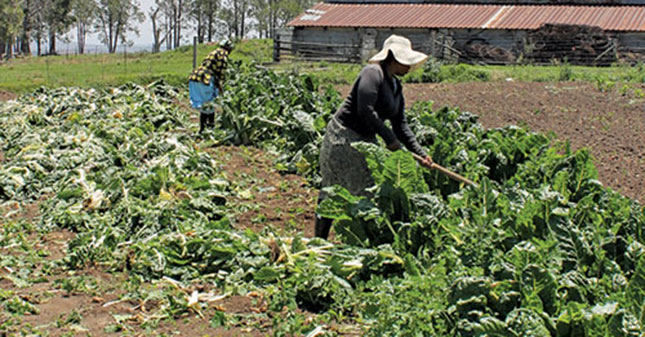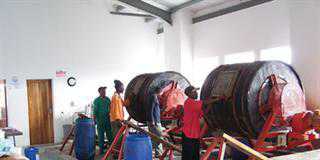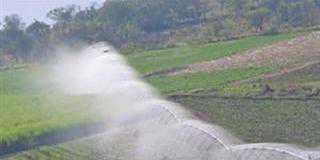
Photo: Luyolo Mkentane
What is the Banking Association of South Africa (BASA) doing to help smallholder farmers?
We currently have two models on the table. The first has been compiled in conjunction with Agbiz and various commercial farmers. For this joint initiative, we’ve secured a commitment of R1 billion per annum over the next 15 years. It will allow commercial farmers to choose their own land reform beneficiaries and set up a trust or similar financial agreement. However, it is very important that this agreement results in proper land reform
READ:GM maize could be less susceptible to fall armyworm
The second is a development finance model aimed at sub-commercial farmers, including smallholders. It adopts a value-chain approach whereby banks help to secure specialist companies to manage the value chain and associated risks to ensure that produce is produced efficiently.
How are you helping farmers who don’t hold title deeds to their farms to access funding from banks?
A different model will have to be created to finance these farmers, because the banking sector relies on land for security.
What are the banks doing to promote the return of fallow land to productivity in the former homelands?
As the land is owned by the government it cannot be claimed. However, the commercial banking sector is prepared to play a role in addressing the issue by getting stakeholders around a table to determine what is commercially viable for smallholders and other suppliers in the value chain. There are also plans to turn the Eastern Cape into a maize belt but this needs to be implemented first.
What are the kind of partners you are looking for?
We’re looking for partners that will help make it viable for smallholder farmers to produce their crops, such as seed companies, agro-processing companies, and government.
What is BASA’s view on the 50:50 land proposal and the 12 000ha land cap?
BASA does not believe the 50:50 land proposal is viable. Firstly, it will reduce existing farms to a sub-economic size, making it impossible to run them profitably. At the moment these farms can only sustain a couple of families, and therefore having multiple families living on a much smaller portion will not be economically viable.
The model proposed by BASA for the commercial sector is an alternative to government’s 50:50 proposal and is aligned to the National Development Plan. It allows farmers to not only have their own farms, but buy neighbouring farms, thereby making them viable economic units. We believe this will create a win-win situation. BASA has not had the opportunity to debate the 12 000ha land cap with stakeholders, but I have my own opinion about it.
I do not believe it is a good idea for the simple reason that the international trend is for farms to get bigger and bigger and our farmers must be able to compete in this arena because of export/import parity prices. Farming is all about critical mass, and if government insists on land caps they should be localised rather than introducing a national cap.
What is your opinion about the minimum wage for farm workers?
You can’t have people living in disgraceful conditions or from hand-to-mouth, or being abused by their employers. I think a minimum wage is a good thing. But what you don’t want to do is have a minimum wage that forces farmers into insolvency, which then results in farm workers losing their jobs.
Is BASA currently in consultation with the government on land reform? If so, which aspects are under discussion?
The financing model that has been proposed by BASA in partnership with Agbiz is currently under review by government. This is the first area in which we have engaged with government.
Would government’s proposed land caps for commercial farmers benefit food security and sustainable agriculture in South Africa?
Ultimately, the real question has to be whether we will be able to feed the population. If I understand the statistics correctly, we can expect our population to increase by about 23 million people over the next 15 years. This is a very frightening prospect because it means, from an agricultural perspective, a lot of work has to be done over the next number of years to feed those additional mouths. Therefore we’ll have to put our shoulders to the wheel to find solutions for improving our agricultural practices and to get costs down, among other issues.
The other very important challenge is job creation. The agriculture sector offers distinct job opportunities to many families, but we need to see agriculture against the backdrop of a bigger picture. If agriculture in South Africa fails, our economy will fail and ultimately so will our country.
It’s critical that agricultural policy is implemented taking a long-term vision that focuses on creating jobs and feeding 23 million additional people 15 years from now.
Phone Pierre Venter on 011 645 6700 or email him at [email protected]
This article was originally published in the 12 June 2015 issue of Farmer’s Weekly.













